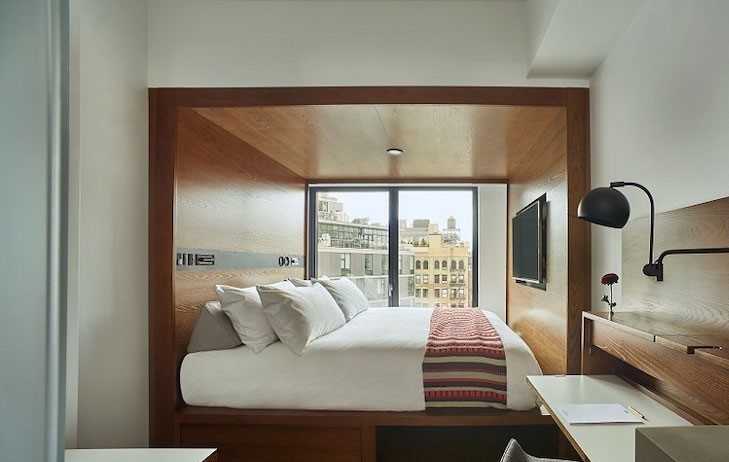MILAN, Italy – There’s a new trend sweeping through the hotel industry: microhotels. As the name suggests these are small places to stay with tiny bedrooms (they have a bed and little else), where every square centimetre is optimised (tables are folded away when not in use; the wardrobes are just an open rail to hang things on). They are minimalist in design, but elegant, with hand-crafted items and touches of colour.
The first to try out the genre were boutique hotels, such as the Hoxton, which started in London then opened in six more cities. Furnished in a personal style and with impeccable taste, microhotels have communal spaces and offer various experiences to enjoy in the city, they have bars and a gourmet kitchen, but the smallest room measures just 12 square metres.
The French Mama Shelter chain has a handful of hotels scattered around the world, often mentioned in design magazines because of their colourful, original décor, which makes them a paradise for Instagrammers. Here, the smallest room measures 15 square metres.
They make city-centre stays a sustainable choice. Some rooms even have bunk beds, with a view over Soho, as is the case with the Arlo in New York.
It was in fact Millennials and their lifestyle that inspired the trend. They want rooms that are small but comfortable, where they will spend as little time as possible because the experience is all about what happens outside. Their playground is the city’s liveliest districts, so location is key.
But they also make use of the communal spaces, where they can work or play, have a drink or a snack (maybe self service, available all night long) or use the gym that stays open round the clock. Some even offer the experiences of cookery or mixology courses, or hold concerts or parties with DJs.
These shared spaces are large, lively and attractive and they typically open onto the exterior where non-guests can join in the fun. So profitability is increased in two ways: by increasing the number of rooms, which are half or even a third the size of traditional hotel bedrooms (usually around 30 square metres) and by getting revenue also from non-guests.
It is such a successful formula it has caught the attention of the big, famous hotel chains, which have now launched their own versions, such as Moxy (the Marriott) and Motto (the Hilton).
Design, experiences 24/7, affordable prices and central locations: these are the microhotels Millennials dream of. And everyone is happy: the entrepreneurs who run them and all those who go there.


















